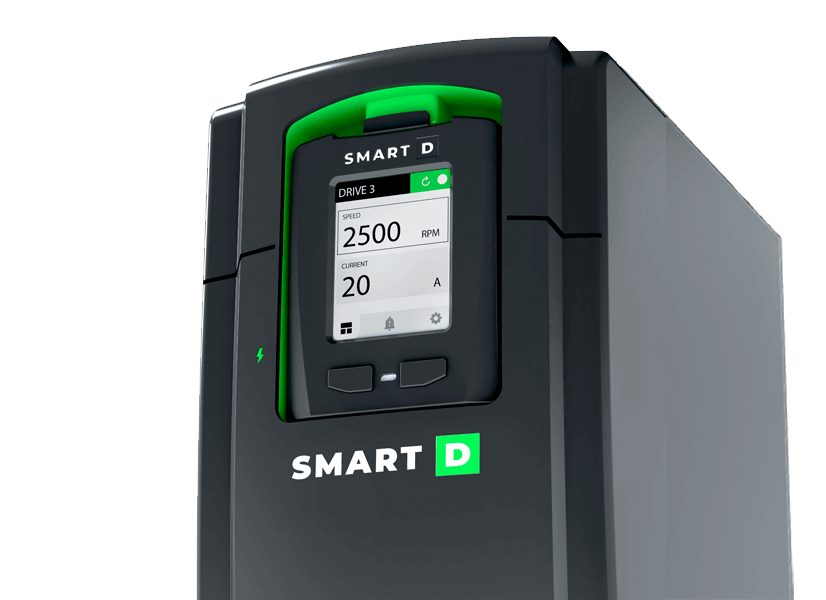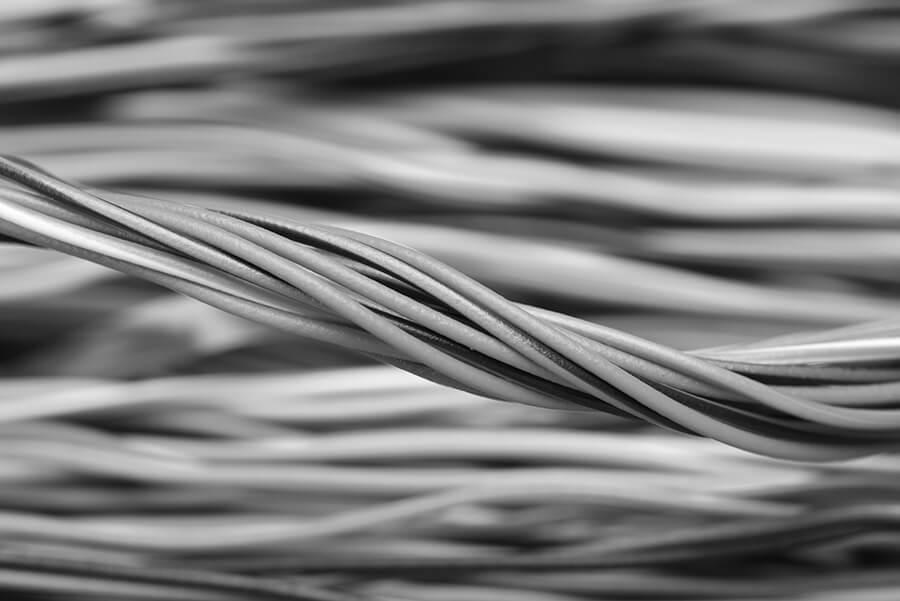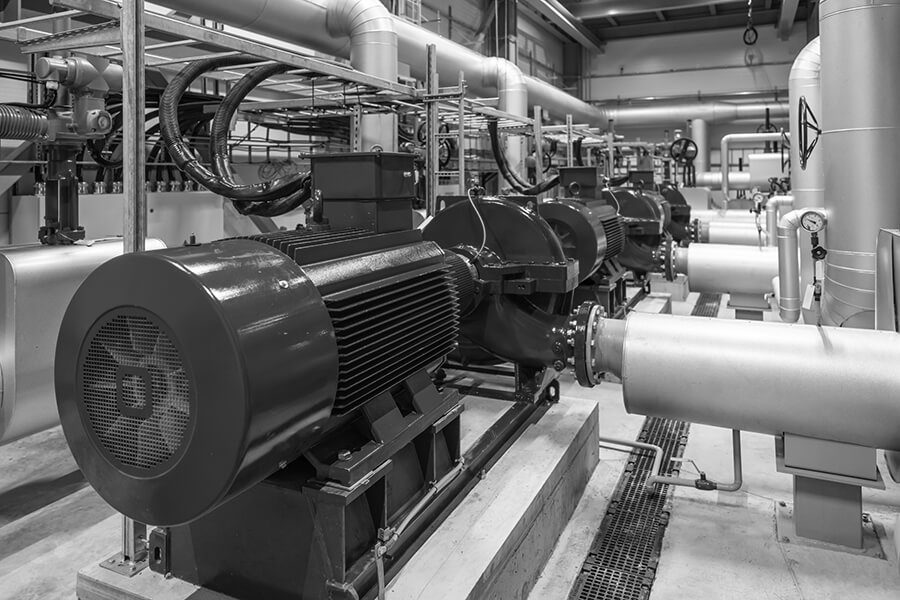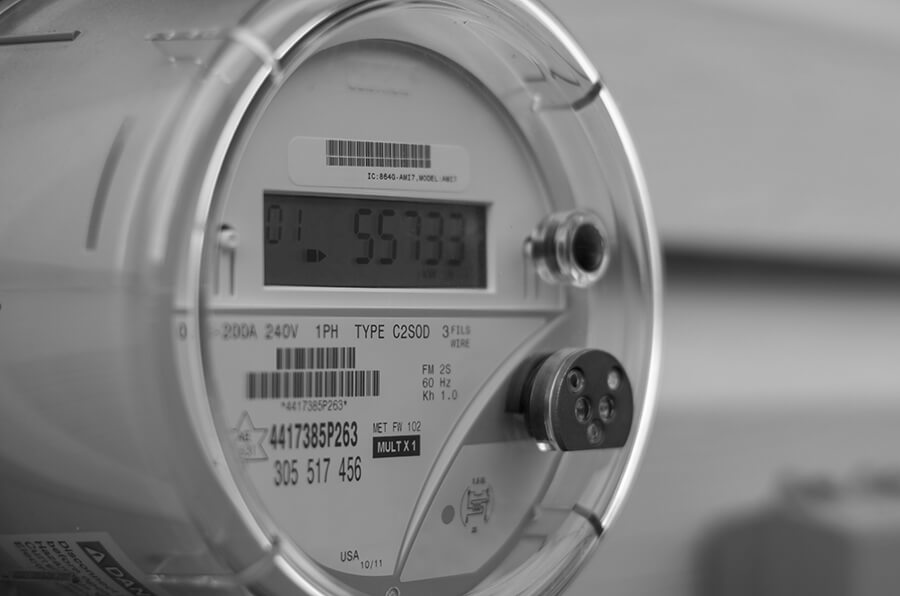Save More
- Home
- Save More
Revolutionizing Variable Frequency Drives:SiC-Based Clean Power VFDs Redefining Industry Norms
The adoption of Silicon Carbide (SiC) technology as a replacement for traditional Insulated Gate Bipolar Transistors (IGBTs) in Variable Frequency Drives (VFDs) is transforming the industry by offering numerous advantages over conventional VFDs. The purpose of this article is to highlight the ways in which SiC-based Clean Power VFDs challenge established assumptions about VFDs and their impact on the overall life cycle cost (LCC) of a pump system.
In order to achieve this goal, we will examine how Clean Power VFDs perform at each stage of the pump process equipment’s main delivery and operation steps. Our analysis will be based on a set of requirements such as motors located hundreds of meters away from the electrical power room, and compliance with IEEE519 recommendations.
Selection and Purchasing
When selecting a Variable Frequency Drive (VFD) for a pump system, relying on familiarity with traditional VFDs is insufficient.
To achieve optimal performance,a standard VFD may require additional devices such as :
to address EMI issues
to reduce harmonics
to smooth the Pulse Width Modulation (PWM) signal powering the motor
that are VFD-rated
is highly recommended to limit the destructive impact of circulating currents resulting from the common-mode voltage of the VFD-generated PWM signal.
When calculating the true initial cost of a standard VFD,
it must be multiplied by 1.5 to 3 depending on the type of additional devices.
In contrast, the use of SiC-based Clean Power VFDs in pump systems can significantly reduce the initial investment cost.
- SiC power transistors allow for fast switching in a reduced volume while generating fewer thermal losses than ever before.
- Well-designed Clean Power VFDs generate a real sine wave to power the motor and do not require filters or generate other drawbacks.
Therefore, there is no need to spend time searching, selecting, and purchasing expensive filtering devices, special cables, or bearing protections.
- This reduces the cost of initial purchasing and the engineering time.

When it comes to delivering the equipment,it is important to consider transportation costs and their carbon footprint.
Clean Power VFDs do not require bulky external filters, resulting in less volume and weight to transport.
For instance, an input passive filter and an output sine wave filter for a typical power drive system 480V / 30kW add 40 kg to the equipment’s weight.
The overall transportation cost depends on a number of factors, including the distance the equipment is being shipped, the type of truck being used, and the fuel prices.
However, in general, the savings are likely to be around 10-15%.
Thus, using Clean Power VFDs not only reduces the initial investment cost,
but also the transportation cost and carbon footprint.
Mounting and Wiring
It is important to consider factors beyond just the initial cost. In traditional VFD systems, additional devices are also resulting in increased the needed space in the electrical cabinet.
However, Clean Power VFDs, as they do not require expensive filtering devices or specialized cables, are smaller in size, making them easier to transport and install, which is especially beneficial in retrofit situations where existing space may be limited.
The resulting space saving can quickly amount to 50% or more when using a Clean Power VFD.

Furthermore, wiring is a significant labor cost, and a Clean Power VFD requires fewer connection points, resulting in less time spent on wiring and verification. This leads to additional cost savings and simplifies the installation process.
Another important consideration is the on-site installation cost, which is impacted by the type of cables used. In traditional VFD systems, the use of expensive inverter duty cables is recommended to mitigate potential issues with the VFD output signal.
Failure to address cable-related issues can lead to increased maintenance expenses, as the PWM output of traditional VFDs can be stressful on motors and cables, ultimately shortening their lifespan.
VFD rated cables tend to be more expensive than standard motor cables due to their specialized design and features to handle the high-frequency pulses and noise generated by VFDs.
The added shielding, insulation, and low capacitance properties contribute to the higher cost.
However, a Clean Power VFD delivers a clean sine wave,
allowing for the use of standard motor cables, which can significantly lower installation costs.
Saving in cable cost can easily reach 20% when using a Clean Power VFD.
Operation
Research has shown that a Variable Frequency Drive (VFD) system is approximately 3% in purchasing costs, 2% in maintenance costs, and 95% in energy costs.
In addition to analyzing the acquisition costs and potential savings from using a Clean Power VFD, it’s important to consider the additional savings that can be realized during the operation of pumping systems.
Operations costs: maintenance, energy consumption and potential downtime
To uncover hidden expenses during operation, it’s important to examine annual maintenance and repair charges, annual energy consumption, and potential downtime.
Preventive maintenance is an effective way to achieve cost savings by ensuring the best availability of the equipment. This includes regular inspections of the electrical system, cleaning the system of debris, and conducting tests on the VFD to ensure it is running efficiently. Regular maintenance and troubleshooting can help address potential issues before they become major problems that require costly repairs or replacements.
However, the reality is that many maintenance operations for pumping systems are reactive, which can be expensive due to the associated downtime costs.

By using Clean Power VFDs, the occurrence of reactive maintenance operations can be significantly reduced, and the lifetime expectancy of the equipment can be increased.
Excessive temperature
Many studies and articles, available on the web with searches like “Variable Frequency Drive Reliability”, or “VFD’s Failure Modes and Root Causes”, found that excessive temperature is responsible for an estimated 25% of VFD failure.
- However, Clean Power VFDs generate less heat and require less cooling, reducing the risk of faults.
Wear and tear
Additionally, wear and tear on system components are limited, reducing the risk of unexpected faults that require reactive maintenance.
- The sinus wave output of a Clean Power VFD is perfectly balanced, and it does not induce common-mode voltage, making the motor's bearing safe from circulating currents.
The risks for unexpected downtime event, with the related unexpected expenses, is then minimized with a Clean Power VFD:
1. The impact of downtime is highly dependent on the specific application of a pump. For industrial or commercial applications where the pump is a crucial part of the operation, the cost of downtime could be significant, possibly thousands or even tens of thousands of dollars per hour!
2. The cost of replacement parts varies widely depending on what needs to be replaced. For a 30KW pump, parts could range from a few hundred to several thousand dollars.
3. And required labor man-hours could be paid anywhere from $50 to $150 per hour for a skilled technician.
4. If the downtime results in lost productivity or disruption to operations, this could also add significant costs.
In other words, every unexpected fault that is avoided thanks to the usage of a Clean Power VFD is a huge saving of money: cost of spare parts, cost of loss production.
Harmonic Distortions
Harmonic distortions can also impact maintenance and repair costs, and the availability of the system.
By using a Clean Power VFD embedding an active front end (AFE), the generation of harmonics can be significantly reduced, resulting in lower maintenance costs and improved system availability.

With a Clean power VFD the current harmonic distortion is lower than 3%.
VS

Compared with an ordinary 6-pulseVFD with an inductor that has a THDi of about 40%.
Total harmonic distortion impactscopper losses, iron losses, and skin losses.
A detailed analysis considering the specific harmonic content and the system characteristics is required to accurately determine the increase in current losses.
However, a simple approach can help to estimate this increase:
The total current in the system with a 40% THDi is 8% higher than the fundamental current. That’s mathematically easy to demonstrate:
- If THDi is 40%, this means the harmonic current is 40% of the fundamental current.
- Note that the harmonic current and the fundamental current are not additive, so the total current in the system is not 140% of the fundamental current.
- Instead, the total root mean square (RMS) current in the system, considering the fundamental and harmonic components, is the quadratic sum of the fundamental current and all the harmonic currents:
| Total RMS current in the system | |
|---|---|
| Current_total = sqrt(current_fundamental2 + current_harmonic2) | |
| or substituting Current_harmonic = 0.4 * Current_fundamental, we get: | |
| Current_total = sqrt(CurrentI_fundamental2 + (0.4 * Current_fundamental)2) | |
| Solving this gives: | |
| Current_total = 1.077 * Current_fundamental | |
| So, the total current in the system with a 40% THDi is 7.7% higher than the fundamental current | |
| Therefore, power loss increase = (1.077)2 = 1.16, 16% higher with a 40% THDi compared to the scenario where there are no or very little harmonic distortions. |
Harmonic distortions in electrical systems can have significant impacts on maintenance and repair costs.
Although process stoppages caused by harmonic distortion are rare, more commonly, they result in nuisance trips or small errors that can lead to additional maintenance and damage to equipment.
These issues can include excessive temperature in motors and transformers, malfunctions in sensitive electronic devices, tripping of circuit breakers, and failure of capacitor banks.
Over time, these issues can accumulate and increase maintenance costs, while decreasing the availability of the system.
By using a Clean Power VFD with an active front end (AFE),
harmonics can be controlled and prevented from reaching problematic levels, resulting in lower maintenance costs and increased system availability.
Annual Energy Bill
The use of Clean Power VFDs in pump systems not only enhances their efficiency but also reduces their energy consumption.
One of the sources of energy losses in a power drive system is the presence of filters, which are eliminated with the use of Clean Power VFDs.
But neglecting filters with an ordinary VFD to eliminate their losses would be a wrong choice as the harmonics will increase, and the higher the harmonics the higher the line current; with the subsequent need for large transformers, bigger cables, and of course greater energy losses.

Furthermore, using a Clean Power VFD, equipped with an active front end (AFE), can also lead to energy bill savings.
Utility companies specify limits for harmonic currents in their contracts with customers, and if the level of harmonics exceeds IEEE519 recommendations at the Point of Common Coupling (PCC), the utility company may issue a fine.
While users may install an input reactor to mitigate the harmonics generated by their VFD at the PCC, this low-cost solution requires regular evaluation, as new equipment in their facility may introduce additional harmonics over time.
From a VFD perspective,
the best solution is to not generate harmonics distortion in the first place.
A Clean Power VFD, equipped with an active front end,
allows for a reduction in harmonics distortion lower than the IEEE519 recommendation, without the need for any additional filters.
Disposal
The disposal of SiC-based Clean PowerVFDs power drive system is also easier and more environmentally friendly than traditional VFDs.
Those VFDs generate less heat and require less cooling, reducing the amount of cooling material required for the system.
Additionally, the simplified design of Clean Power VFDs system reduces the number of devices in the system that need to be disposed of, reducing environmental impact.
Return on Investment (ROI)
VFDs, when applied to pump systems, especially bring energy savings when the motor isn’t always running at full speed.
The power required to run a pump varies with the cube of the speed (this is known as affinity laws for pumps), which means reducing the speed can significantly reduce energy consumption.
Assuming a pump, needing a 30kW (approximately 40HP) motor to perform its work, operates for 8,000 hours per year, the energy consumption at different operating conditions would be:
1. 40% of the time at 75% speed:
Energy = 0.40 * 8000 hours * (0.75^3) * 30 kW = 40,500 kWh
2. 40% of the time at 50% speed:
Energy = 0.40 * 8000 hours * (0.50^3) * 30 kW = 12,000 kWh
3. 20% of the time at 100% speed:
Energy = 0.20 * 8000 hours * 30 kW = 48,000 kWh
The total energy consumption in a year is:
40,500 kWh + 12,000 kWh + 48,000 kWh = 100,500 kWh
The Value per Year
While the usage of a VFD provides energy saving, we saw previously that 40% of harmonic distortion increase the power losses by an average of 16%.
Assuming those 16% are savings with the Clean Power VFD, the value per year would be:
Assuming those 16% are savings with the Clean Power VFD, the value per year would be:
- Savings = 0.16 * 100,500 kWh = 16,080 kWh
Converting this to monetary terms using the price of electricity ($0.10/kWh):
- Savings = 16,080 kWh * $0.10/kWh = $1,608 per year
The budgetary additional cost of a 30kW Clean Power VFD versus an ordinary VFD is about $3,000 ($2,000 – $5,000).
So, the ROI period would be:
- ROI = Investment / Savings = $3,000 / $1,608 ≈ 1.9 years or approximately 1 year and 10 months
These calculations are a simplification,
and real-world savings can be affected by many factors,
including the pump’s efficiency curve, the system’s head-pressure curve, the pump control strategy, and more.
But it gives a good estimate of how fast the investment for a Clean Power VFD can be versus an ordinary VFD, looking only at the energy benefits from Low Harmonic features.
In summary, the use of SiC-based Clean Power VFDs with built-in AFE in pump systems offers a range of benefits.
These benefits include:
material, labor and related overhead lower expenses, as well as improved efficiency and energy savings, reduced maintenance costs, and enhanced system availability.
SiC-based Clean Power VFDs generate less heat and require less cooling, which reduces the risk of faults, wear and tear on system components, and unexpected faults.
They reduce the occurrence of reactive maintenance operations and increase the lifetime expectancy of the equipment.
Additionally, SiC-based Clean Power VFDs significantly reduce the generation of harmonics distortion, which can lead to excessive temperature in motors and transformers, sensitive electronic devices malfunctions, tripping of circuit breakers, and capacitor bank failures.
By reducing harmonics distortion below IEEE519 recommendations without the use of filters, SiC-based Clean Power VFDs help avoid fines from utilities and eliminate the need for regular evaluation of input reactors.
Overall, implementing SiC-based Clean Power VFDs in pump systems can result in substantial savings in purchasing, maintenance, and energy, while also improving system performance and reliability.
Book A Demo Right Now!
SmartD Clean Power is real and it is ready to revolutionize motor control. Don’t just take our word for it, see it for yourself.
This post is also available in: Français